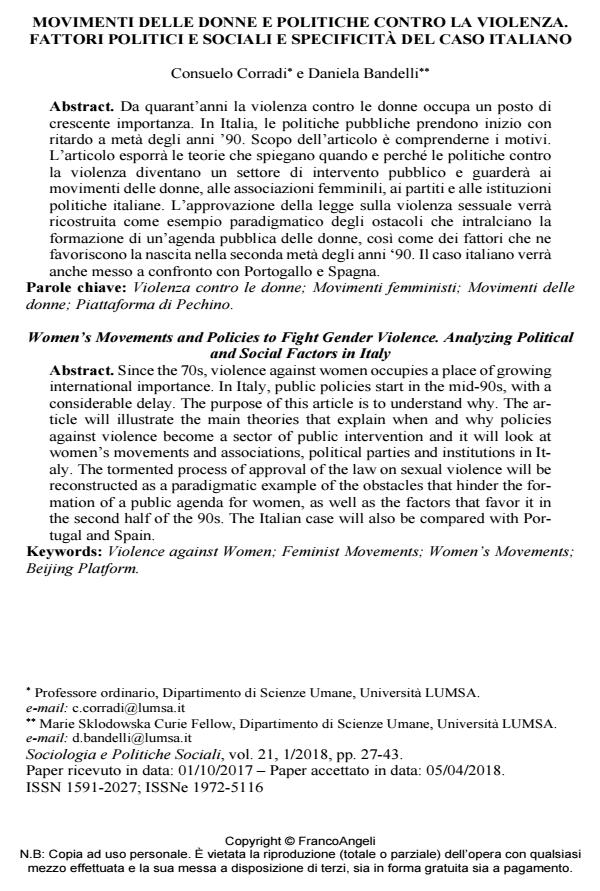Women’s Movements and Policies to Fight Gender Violence. Analyzing Political and Social Factors in Italy
Journal title SOCIOLOGIA E POLITICHE SOCIALI
Author/s Consuelo Corradi, Daniela Bandelli
Publishing Year 2018 Issue 2018/1
Language Italian Pages 17 P. 27-43 File size 225 KB
DOI 10.3280/SP2018-001003
DOI is like a bar code for intellectual property: to have more infomation
click here
Below, you can see the article first page
If you want to buy this article in PDF format, you can do it, following the instructions to buy download credits

FrancoAngeli is member of Publishers International Linking Association, Inc (PILA), a not-for-profit association which run the CrossRef service enabling links to and from online scholarly content.
Since the 70s, violence against women occupies a place of growing international importance. In Italy, public policies start in the mid-90s, with a considerable delay. The purpose of this article is to understand why. The article will illustrate the main theories that explain when and why policies against violence become a sector of public intervention and it will look at women’s movements and associations, political parties and institutions in Italy. The tormented process of approval of the law on sexual violence will be reconstructed as a paradigmatic example of the obstacles that hinder the formation of a public agenda for women, as well as the factors that favor it in the second half of the 90s. The Italian case will also be compared with Portugal and Spain.
Keywords: Violence against Women; Feminist Movements; Women’s Movements; Beijing Platform.
Consuelo Corradi, Daniela Bandelli, Movimenti delle donne e politiche contro la violenza. Fattori politici e sociali e specificità del caso italiano in "SOCIOLOGIA E POLITICHE SOCIALI" 1/2018, pp 27-43, DOI: 10.3280/SP2018-001003